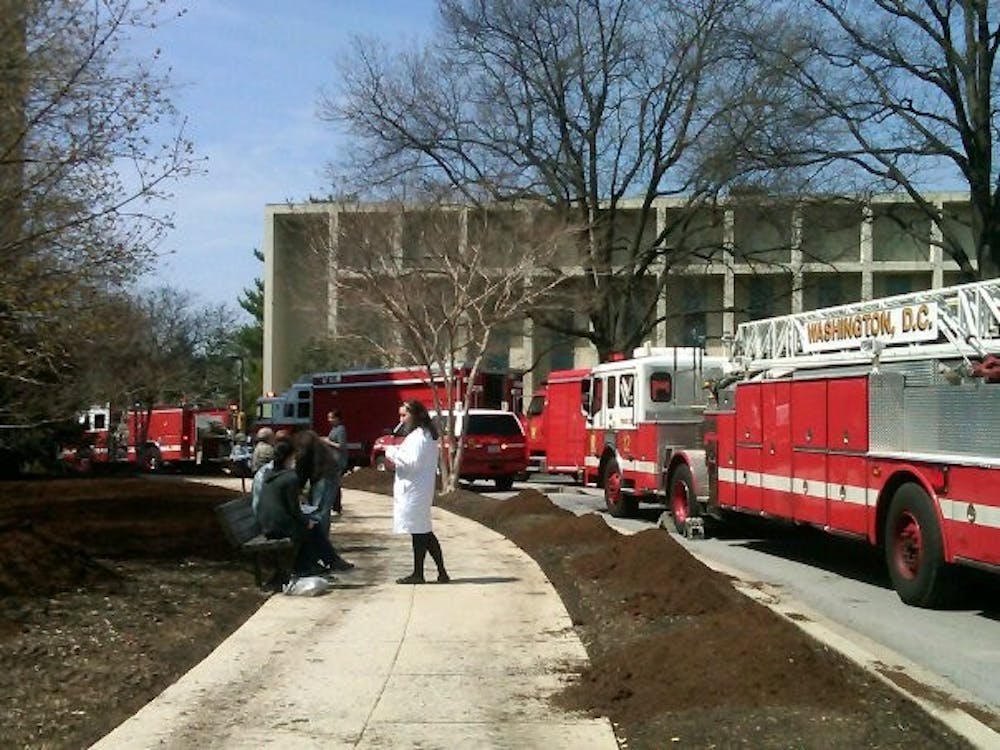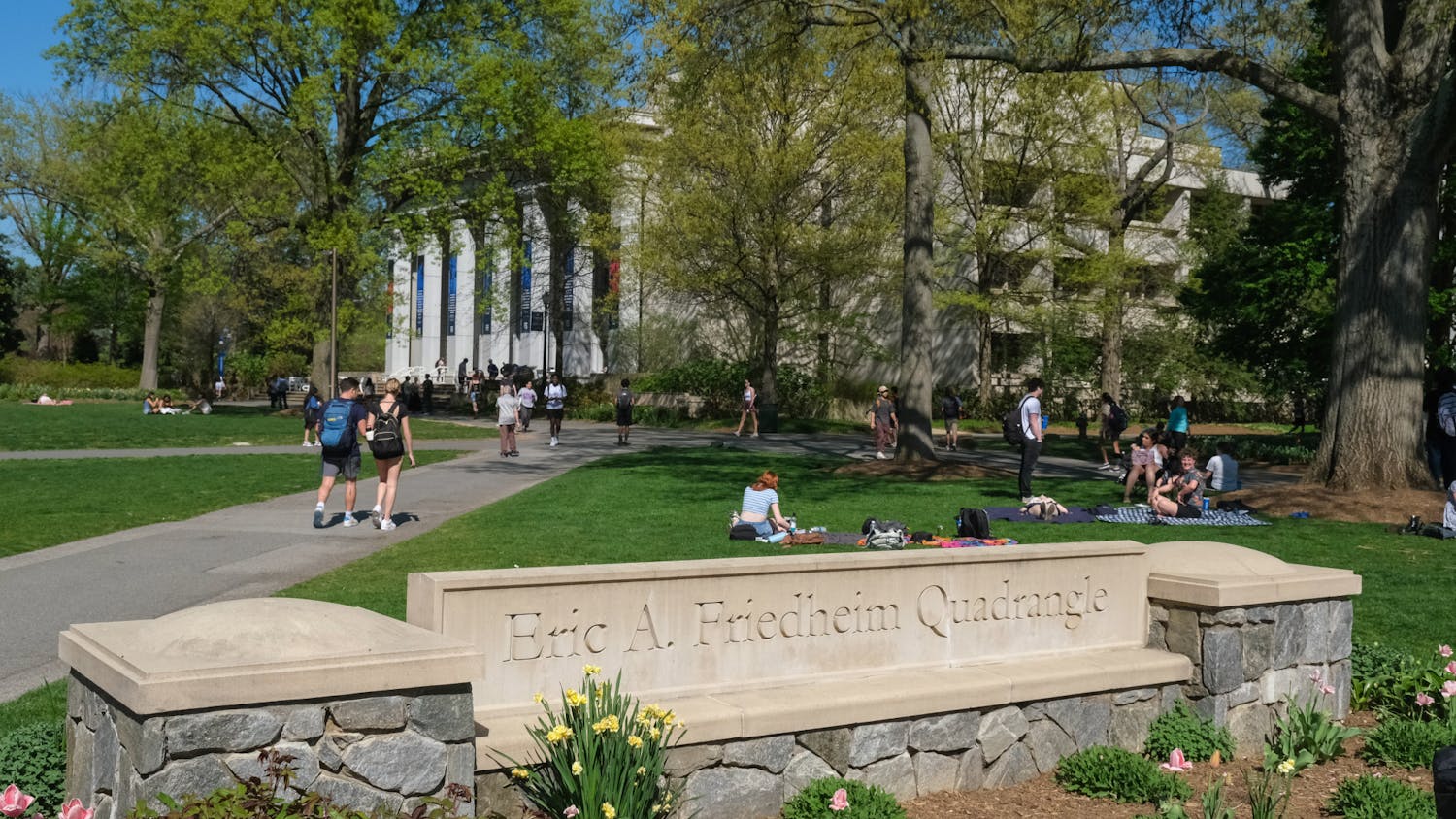AU students did not receive text message and e-mail alerts about a “dangerous chemical spill” in the Beeghly Building for more than an hour after the building was evacuated April 7.
A handwarmer in boiling water in Beeghly 105 set off a smoke alarm and caused the evacuation of the entire building for nearly an hour while the D.C. Fire Department’s Hazardous Materials Unit (Hazmat) responded to the incident. Beeghly was evacuated at 11:54 a.m. due to vapors of sodium acetate, a crystallized compound commonly found in handwarmers.
More than an hour later, a 1:10 p.m. campus text message and e-mail alert warned students: “Dangerous chemical spilled at Beeghley Building. Evacuate building immediately and stay away until further notice.”
Department of Public Safety Chief Michael McNair said the alert wasn’t sent out until then because Public Safety officials still weren’t exactly sure of what had happened and that they needed to wait for DCFD to investigate before sending the alert out.
“When you have a working incident, it’s not always easy to figure out what happened and what’s going on, and you don’t want to give people erroneous information,” McNair said of the delay between the evacuation and campus-wide alert. “The problem was, it took [Public Safety officials] awhile to figure out that’s what was going on.”
McNair said Public Safety and chemistry department officials were not communicating initially to determine what exactly happened, as they were trying to evacuate the building first.
“There was a lot of milling about because nobody was providing information to the officer as to what truly had occurred,” McNair said. “Had they done that, it might have been a little bit different. They did later on, but not right away.”
McNair said there wasn’t any real danger since the building had been evacuated so there was no danger of students getting hurt.
“Really the Rave Alerts were more for students who might have had a class at two o’clock,” he said.
McNair also said the alert’s wording may have been too strong with “dangerous,”
but the alert system is based off of templates. This template has since been revised.
“Sometimes when you’re putting these things out you don’t realize what impact they’ll have on people,” he said. “We still scared the bejesus out of people. Maybe if we’d waited a little longer we might not have said ‘dangerous chemical.’”
Chemistry Laboratory Director Jane Ferguson said she was preparing a demonstration in the lab with the handwarmer — which contains sodium acetate, commonly found in heating pads — and water when the smoke alarm sounded.
McNair said the fume hood was not properly opened, so the room filled with smoke, setting off the alarm.
Ferguson was not in the room when the alarm went off and neither were students, she said.
Sodium acetate is non-flammable and is “kind of like burning table salt,” Ferguson said while standing outside Beeghly in her white lab coat during the evacuation.
An automated alarm reacted to a vapor in the lab, according to Public Information Officer Pete Piringer of the D.C. Fire and Emergency Medical Services Department.
Four fire trucks, an ambulance, the Hazmat truck and various DCFD SUVs and trucks responded to the call at 12:37 p.m. Piringer said the building was evacuated smoothly, and no one was sick or exposed to the compound.
The Hazmat Unit, dressed in encapsulated suits with air tanks, opened windows and blew fans to ventilate the building, Piringer said.
“It’s all precautionary,” he said.
Post-baccalaureate student Mary Smith said she was on the fourth floor of Beeghly when the alarm sounded. She and freshman Mary May Kozlik grabbed their coats and evacuated the building.
“Everything was pretty relaxed. We thought it was a fire alarm, a practice alarm,” Smith said during the evacuation, still wearing her medical gloves. “But because it’s the chemistry department, everyone was worried.”
Smith and Kozlik said the fire department’s response was “not very urgent at all.” Students were allowed to collect their belongings from Beeghly only on the first floor.
McNair said allowing students back into the first floor, where the incident occurred, was a mistake. He said officials needed to have secured a better perimeter, keeping students farther away from the building.
He also said officials should work to set up a command post, where all officials should meet to exchange information, in the event of a future incident.
AU sent out another text and e-mail alert at 1:38 p.m., notifying students that an all clear had been given for the building. The building was re-opened at 2:03 p.m.
news@theeagleonline.com





